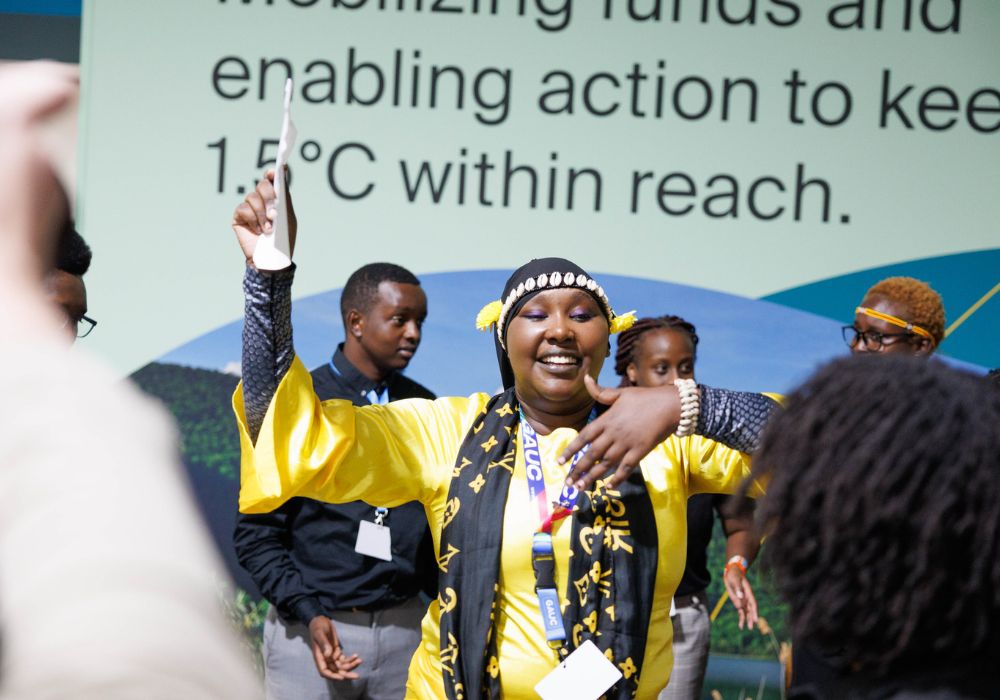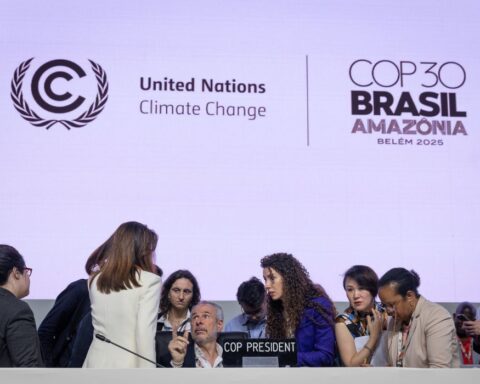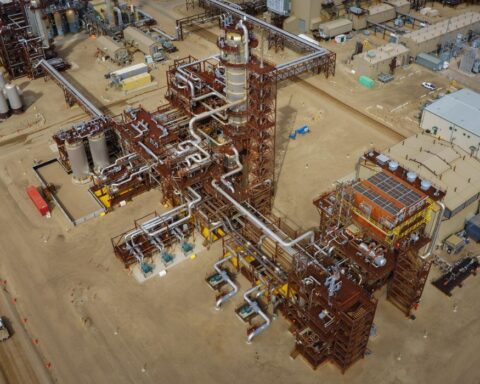Aligning global climate action with the Paris Agreement would deliver huge increases in prosperity in both high- and low-income countries by 2050, says new research from two leading economic development organizations.
Thirty weeks out from this year’s COP30 climate summit in Belém, Brazil, an advance brief of a report from the Organisation for Economic Co-operation and Development (OECD) and the United Nations Development Programme (UNDP) finds that doubling down on global efforts to keep planetary heating to 1.5°C will lead to a significant net gain in global gross domestic product.
The economic benefits of climate action will accrue rapidly, UNDP administrator Achim Steiner said last week at the 16th annual Petersberg Climate Dialogue in Berlin.
“Over the next 20 to 25 years, you’re talking about growth rates that translate into literally billions and billions of additional economic investments and returns on investments,” Steiner said.
With serious collective climate action, some wealthy countries will see their per capita GDP growth increase by more than 60% by 2050, while some poor ones could see that same metric soar by a “remarkable“ 124% from 2025 levels by the end of the century, Steiner says.
On the other hand, business-as-usual approaches to the climate crisis could see global GDP reduced by 33% by 2100.
Existing climate commitments won’t deliver
Titled “Investing in Climate for Growth and Development: The Case for Enhanced NDCs,” the brief claps back against claims that aggressive climate action is an economic non-starter.
First submitted in 2015, and due every five years, NDCs (nationally determined contributions) are voluntary plans that signatories to the Paris Agreement submit to the UN Framework Convention on Climate Change outlining how their domestic policies will contribute to global climate action.
Countries are being urged to submit “enhanced” NDCs this year because the current trajectory of emissions is insufficient to keep warming to the Paris target of 1.5°C.
While Paris-aligned NDCs would provide a rapid and rising boost to global GDP, weak or unclear policies “risk delaying private investments and reducing GDP by 0.75% as early as 2030,” the brief’s authors say.
And those costs will multiply. “We’re actually talking about losing perhaps up to a third of global GDP this century,” Steiner warned his audience in Berlin.
When avoided climate impacts are factored in, the economic case for Paris-aligned climate action – beginning with a projected net GDP gain of 0.23% by 2040 – gets even stronger. “By reducing the risk of climate-induced events, an enhanced NDC scenario could prevent significant economic losses and increase global GDP by up to 3% by 2050 and up to 13% by 2100,” the OECD and UNDP say.
A (narrowing) window of opportunity
Most of the countries that signed on to the Paris Agreement missed this year’s February 10 deadline to submit their NDCs.
As of the end of February, only 18 of 195 NDCs had been submitted, and of those, only the United Kingdom’s is “in the right ballpark for a cost-effective path to 1.5ºC,” writes Climate Action Tracker. (Canada submitted its not-in-the-right-ballpark NDC on February 12.)
Countries are dragging their feet on their NDCs because of “shifting priorities” amidst “mounting economic uncertainty, geopolitical tensions, and rising public debts,” the OECD and UNDP note.
That so many countries have yet to submit their NDCs means there is still time to change the global climate-action script, U.K.-based climate think tank E3G observes. “Key players still in the consultation phase – notably the EU, China, Japan, Australia, Indonesia, and Mexico – have a chance to lead the way ahead for the next decade and signal a cycle of positive reinforcement for other countries to follow suit in their ambition,” the think tank writes.
But again, much is at stake. Speaking at the Petersberg conference, UN climate secretary Simon Stiell warned that Europe’s economy will not survive the decades of extreme weather that are in the offing should strong global climate action fail to materialize, The Guardian reports.
By 2050, climate impacts would be shrinking Europe’s economy by 2.3% per year, Stiell told his audience. “Although those figures may appear small, the crucial point is that the economic contraction would continue year after year,” The Guardian’s Fiona Harvey writes. “By the end of two decades of such damage, the EU economy would cease to exist.”
All NDCs must be submitted by September if they are to be included in the UN’s next global synthesis of climate action, due out ahead of COP30.
The full OECD/UNDP report on the economic case for enhanced NDCs will be released in May.
This article was first published by The Energy Mix. It has been edited to conform with Corporate Knights style. Read the original story here.







